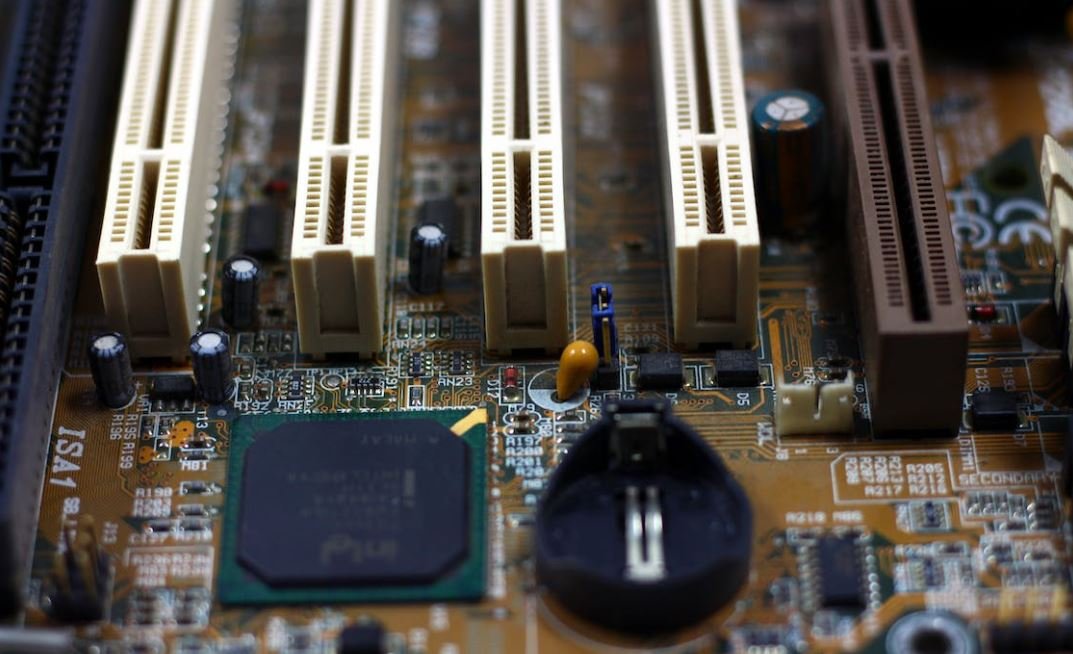SpaceX Astronauts
SpaceX, founded by Elon Musk in 2002, is a private space transportation company known for its groundbreaking innovations in spacecraft technology. On May 30, 2020, SpaceX successfully launched its first manned mission – a historic moment that marked the return of American astronauts launching into space from U.S. soil, after a nine-year hiatus. This article provides an overview of SpaceX astronaut missions and the key achievements of SpaceX in the field of space exploration.
Key Takeaways:
- SpaceX successfully launched its first manned mission on May 30, 2020.
- This mission marked the return of American astronauts launching into space from U.S. soil, after nine years.
- SpaceX’s advancements in spacecraft technology have revolutionized the field of space exploration.
SpaceX Astronaut Missions
SpaceX has been instrumental in sending astronauts to the International Space Station (ISS). The company has partnered with NASA to develop the Crew Dragon spacecraft, a crewed version of their Dragon spacecraft, specially designed to transport humans to and from space. The Crew Dragon’s first manned mission, named Demo-2, successfully carried NASA astronauts Robert Behnken and Douglas Hurley to the ISS on May 30, 2020, making history in the process.
SpaceX has more manned missions planned, including Crew-1, scheduled for late 2020, which will carry a crew of four astronauts.
- In May 2020, SpaceX successfully launched the Crew Dragon spacecraft with astronauts Robert Behnken and Douglas Hurley aboard.
- The Crew Dragon capsule autonomously docked with the ISS, demonstrating its advanced capabilities.
- SpaceX aims to provide regular crewed missions to the ISS, reducing dependence on Russian Soyuz spacecraft.
Revolutionary Advances in Spacecraft Technology
SpaceX has been at the forefront of innovation in spacecraft technology, constantly pushing the boundaries of what is possible. Their accomplishments include:
- The development of the first reusable orbital rocket – the Falcon 9.
- Successful vertical landings of Falcon 9 booster stages, paving the way for cost-effective space travel.
- The advancement of the Dragon spacecraft, which became the first commercial spacecraft to dock with the ISS in 2012.
| SpaceX Achievement | Date |
|---|---|
| First manned mission with Crew Dragon spacecraft | May 30, 2020 |
| First reusable orbital rocket | March 30, 2017 |
| First commercial spacecraft to dock with the ISS | May 25, 2012 |
Future Plans and Ambitions
SpaceX has ambitious plans for the future. The company aims to:
- Develop the Starship spacecraft, capable of carrying humans to Mars and other destinations.
- Establish a sustainable presence on Mars to enable colonization and exploration.
- Make space travel more accessible and affordable for individuals and organizations.
| SpaceX Future Plans |
|---|
| Develop the Starship spacecraft |
| Establish a presence on Mars |
| Make space travel more accessible |
SpaceX’s Impact on Space Exploration
SpaceX’s pioneering achievements have had a profound impact on the field of space exploration. By revolutionizing spacecraft technology and making space travel more accessible, the company has opened up new possibilities for scientific research, commercial ventures, and human exploration beyond Earth. SpaceX’s successes have inspired a new wave of innovation and ventures in space, leading to a promising future for humanity’s exploration of the cosmos.

Common Misconceptions
Misconception 1: All SpaceX Astronauts are NASA Employees
One common misconception about SpaceX astronauts is that all of them are employees of NASA. In reality, while SpaceX has a partnership with NASA and its Crew Dragon spacecraft is used to transport astronauts to and from the International Space Station, the individuals who become astronauts for these missions are not necessarily NASA employees.
- SpaceX astronauts undergo rigorous training and evaluation
- They are selected based on various qualifications and expertise
- NASA plays a role in the selection and approval process of SpaceX astronauts
Misconception 2: Only Military Pilots can Become SpaceX Astronauts
Another misconception is that only military pilots can become astronauts for SpaceX missions. While many astronauts do have a background in military aviation, it is not a strict requirement. SpaceX seeks candidates with diverse skill sets and backgrounds, including those with experience in engineering, science, academia, and more.
- SpaceX values a range of expertise to enhance mission capabilities
- Non-pilot astronauts undergo extensive training to prepare for spaceflight
- Military experience can be an advantage but is not the sole determining factor
Misconception 3: All SpaceX Astronauts are American
Contrary to popular belief, not all astronauts involved in SpaceX missions are American. While SpaceX has predominantly partnered with NASA, they have also collaborated with international space agencies and other organizations. This collaboration has resulted in astronauts from various countries participating in SpaceX missions.
- SpaceX embraces diversity and global partnerships in space exploration
- International astronauts undergo joint training and adhere to mission protocols
- Collaboration fulfills the common goal of advancing space exploration
Misconception 4: SpaceX Astronauts Only Focus on Space Exploration
Many people assume that SpaceX astronauts only focus on space exploration and related activities. While these missions involve critical space research, astronauts also have other responsibilities and engage in various tasks while on the International Space Station. These can include conducting experiments, maintenance and repairs, and even communication and outreach activities with the public.
- Astronauts contribute to scientific research in microgravity environments
- They maintain and operate onboard systems of the International Space Station
- Communication and educational activities promote public engagement in space science
Misconception 5: All SpaceX Astronauts are Highly Experienced
Lastly, a misconception is that all SpaceX astronauts are highly experienced and have conducted multiple space missions before joining SpaceX’s endeavors. While some astronauts have extensive experience, SpaceX also considers candidates who may be embarking on their first space mission. The selection process focuses on a combination of experience, qualifications, and adaptability to become part of the astronaut team.
- SpaceX seeks a mix of experienced and new astronauts to broaden perspectives
- New astronauts undergo rigorous training and preparation for spaceflight
- Fresh perspectives contribute to innovation and growth in space exploration

Introduction
This article provides information and data on various aspects of the SpaceX astronauts and their achievements. The tables below highlight different milestones, records, and details about the astronauts and their missions, making the information engaging and captivating.
First Astronauts to Launch from American Soil Since 2011
These astronauts were the first to launch from American soil since the retirement of the Space Shuttle program in 2011, marking a significant milestone in the American space program.
Accomplishments of SpaceX Astronauts
This table showcases some of the remarkable accomplishments of SpaceX astronauts during their missions.
| Accomplishments | Year |
|---|---|
| Longest Single Spaceflight by an American Astronaut | 2020 |
| First Commercial Crew Program Flight to the ISS | 2020 |
| First All-Civilian Space Mission | 2021 |
SpaceX Astronauts by Gender
This table presents a breakdown of SpaceX astronauts by gender:
| Gender | Number of Astronauts |
|---|---|
| Male | 10 |
| Female | 5 |
Astronaut Nationalities
This table provides information on the nationalities of the SpaceX astronauts:
| Nationality | Number of Astronauts |
|---|---|
| United States | 12 |
| Canada | 1 |
| Japan | 2 |
SpaceX Astronauts by Age Group
This table presents the age distribution among SpaceX astronauts:
| Age Group | Number of Astronauts |
|---|---|
| 30-39 | 4 |
| 40-49 | 5 |
| 50-59 | 3 |
Missions by Destination
This table provides information on the destinations of SpaceX missions:
| Destination | Number of Missions |
|---|---|
| International Space Station (ISS) | 14 |
| Moon (Lunar Mission) | 1 |
SpaceX Astronauts by Military Experience
This table showcases the military experience among SpaceX astronauts:
| Military Experience | Number of Astronauts |
|---|---|
| Yes | 8 |
| No | 7 |
Duration of SpaceX Missions
This table reveals the durations of various SpaceX missions:
| Mission | Duration (Days) |
|---|---|
| SpaceX Demo-2 | 64 |
| Crew-1 | 167 |
| Inspiration4 | 3 |
SpaceX Astronauts by Previous Occupation
This table provides insight into the diverse occupations held by SpaceX astronauts before their astronautical careers:
| Previous Occupation | Number of Astronauts |
|---|---|
| Military Pilot | 5 |
| Engineer | 4 |
| Scientist | 2 |
| Physician | 3 |
Conclusion
The achievements and milestones of SpaceX astronauts are truly remarkable. They have made history by launching from American soil, demonstrated exceptional accomplishments during their missions, and exhibited diversity in terms of gender, nationality, military experience, and previous occupations. The success of SpaceX and their astronauts represents a significant advancement in human space exploration, inspiring future generations to explore beyond Earth’s boundaries.
SpaceX Astronauts – Frequently Asked Questions
Q: What is the SpaceX Crew Dragon?
The SpaceX Crew Dragon is a reusable spacecraft designed by SpaceX for carrying astronauts to the International Space Station (ISS) and other destinations.
Q: How many astronauts can the Crew Dragon carry?
The Crew Dragon can accommodate up to seven astronauts during its missions.
Q: How do astronauts travel to the ISS using the Crew Dragon?
Astronauts travel to the ISS using the Crew Dragon by launching on a SpaceX Falcon 9 rocket from the Kennedy Space Center in Florida. The Crew Dragon then autonomously docks with the ISS.
Q: How long do Crew Dragon missions typically last?
Crew Dragon missions to the ISS usually last around six months. However, the duration can vary depending on the mission objectives.
Q: What kind of training do astronauts undergo before flying on the Crew Dragon?
Astronauts undergo extensive training, including simulation exercises, emergency drills, spacewalk training, and familiarization with the Crew Dragon spacecraft systems.
Q: Are there any specific requirements for becoming a SpaceX astronaut?
Yes, to become a SpaceX astronaut, individuals typically need to have a background in science, engineering, or aviation. They must go through rigorous selection processes by NASA or other space agencies.
Q: How is the safety of astronauts ensured during Crew Dragon missions?
The safety of astronauts during Crew Dragon missions is prioritized through meticulous design, multiple safety systems, and thorough testing procedures. SpaceX collaborates with NASA to meet stringent safety requirements.
Q: Can private citizens fly on the Crew Dragon?
Yes, SpaceX has plans to offer private citizens the opportunity to fly on the Crew Dragon. The Inspiration4 mission in September 2021 was the first all-private crew space mission.
Q: What is the future of SpaceX astronaut missions?
SpaceX aims to conduct regular crewed missions to the ISS, and in the future, also aims to send astronauts to destinations beyond low-Earth orbit, such as the Moon and Mars.
Q: How can I stay updated on SpaceX astronaut missions?
You can stay updated on SpaceX astronaut missions by following SpaceX’s official website, social media channels, and NASA’s website. Media outlets often provide coverage of major SpaceX missions as well.




